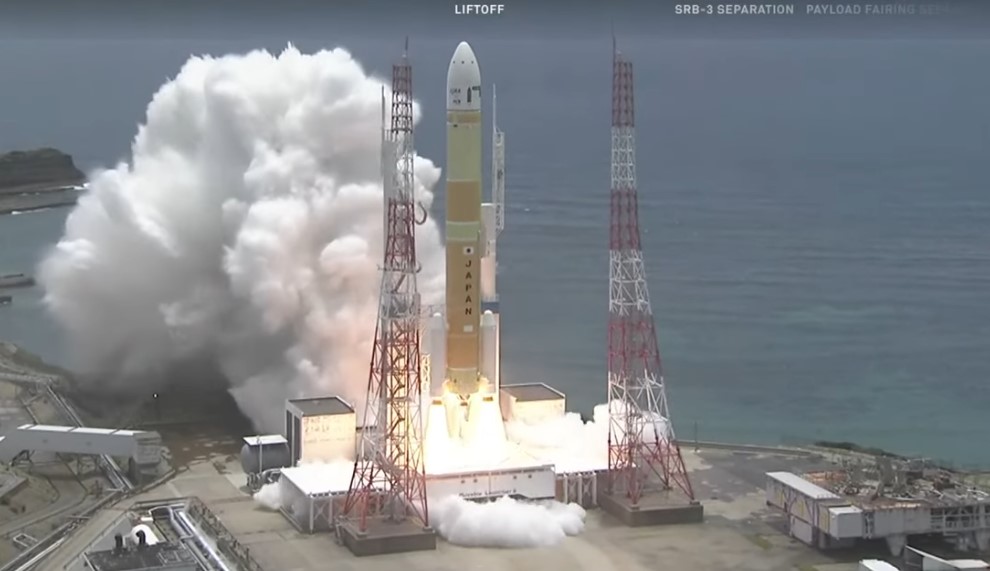HELSINKI — Japan’s H3 rocket successfully launched an Earth observation satellite Sunday on its third flight.
The H3 rocket lifted off from the Tanegashima Space Center at 11:06 p.m. Eastern, June 30 (0306 UTC, July 1) carrying the Advanced Land Observing Satellite-4 (ALOS-4), also known as DAICHI-4.
The two-stage launch vehicle flew as planned and ALOS-4 separated at approximately 16 minutes and 34 seconds after the liftoff, the Japan Aerospace Exploration Agency (JAXA) announced.
ALOS-4’s solar arrays fully deployed, as confirmed by telemetry data received from the satellite at JAXA Mingenew Station in Australia.
The launch follows the H3’s successful second flight in February. The H3’s inaugural launch in March 2023 suffered a second stage engine failure, leading controllers to issue a destruct command to destroy the stage and its ALOS-3 payload.
The failure led to the delay of Japan’s Martian Moons eXploration, or MMX, mission, which aims to collect samples from the Martian moon Phobos and return them to Earth. The mission will now target a Martian launch window in 2026.
ALOS-4, built by prime contractor Mitsubishi Electric Corporation, carries a phased array type L-band synthetic aperture radar (PALSAR-3). The satellite will operate in sun-synchronous orbit and bring improved observation performance over the ALOS-2 satellite and its PALSAR-2 payload.
The radar satellite will provide day and night observation as well as penetrating clouds. ALOS-4 will be used for observing and monitoring disaster-hit areas, forests, and sea ice.
It will also challenge new areas such as monitoring infrastructure displacement, according to JAXA. It will be able to provide evidence of ground transformation caused by volcanic activity or an earthquake on a scale of up to a few centimeters through comparison of data acquired during separate observations.
ALOS-4 provides an increased swath width of 200 kilometers, compared with 50 km for ALOS-2, while maintaining high resolution.
The satellite also carries an Automatic Identification System for ships (AIS) receiver to monitor oceans by receiving AIS signals from vessels.
The second successful flight of H3 will be a boost to Japan’s space plans. The next-generation rocket is to succeed the H-2A. It will be the country’s workhorse for civilian and military missions. These will include exploration missions and ISS resupply with the HTV-X cargo spacecraft.
The H3 comes in configurations with no solid rocket boosters, two SRBs or four SRBs for higher payload needs. The latter two variants can also utilize an elongated payload fairing.
The rocket is designed to be more cost-effective and therefore competitive on the international commercial launch market.
JAXA is also conducting studies into a large, reusable launch vehicle as the core of its future space transportation plans.
